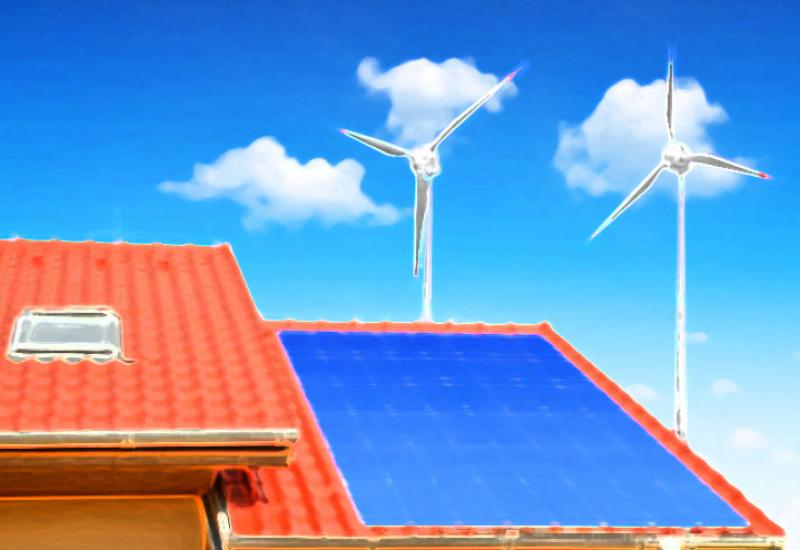It has been almost 20 years since one of the greatest developments of the late twentieth century was commercialized by the company Sony – it is the lithium-ion accumulator (LIA). Today it is the most energy-intensive electrochemical energy storage, which is widely used to power laptops, cameras, mobile phones and other electronic devices. Very tempting is the perspective of its use in electric cars. But still hinder some drawbacks of such accumulator which make such usage is problematic. Among them, the most important: the toxicity of many substances which it contains, insufficiently high performance in power (in other words, the inability to select a high enough current strength required when working in traction mode); potential danger in maintenance - at random depressurization (which is possible when electric car hits into road accident ) battery easily lights.
In the project №2991-f "New materials of the modern energy converting systems: synthesis, structure, physico-chemical and electrochemical properties, usage” which was performed at the Department of General and Inorganic Chemistry in 2006-2008., carried out a series of fundamental studies. the results of which will contribute to the development of a new generation of lithium-ion batteries without these drawbacks. These studies devoted to the synthesis and study of properties of new nanomaterials that could be potentially used as active components of energy converting devices and other fields of modern technology. Scientific results received during the implementation of the project can be applied to solve all three problems mentioned above LIA.
Thus the most toxic components of the LIA are compounds of cobalt, studied their possible replacement by less toxic and cheaper materials. Due to this was investigated a part of phase diagram of the system Li-Mn-Co-O and found areas of the existence of active materials, that contain minimal amount of cobalt. Particular, the synthesized compound LiMe 2 O 4 with spinel structure containing only 20% of atoms of cobalt in structural positions Me (the rest - a cheap and non-toxic manganese) which has positive electrochemical properties and can be used instead of the traditional LiCoO 2 in the positive electrode LIA. Such replacement will reduce the toxicity of the material and reduce its cost.
The value of the operating current of the battery is largely limited by the properties of the negative electrode is made of special grades of graphite. It was found, that one can create on the surface of graphite nanosized catalytic centers, which contain some d-metals, and significantly improves the operation of electrode material at high currents. These centers are created by pyrolysis of complex metal compounds, previously deposited on the surface of graphite. This result can be used to develop more powerful batteries for electric vehicles. The mentioned above results can be used to improve the LIA, but they do not solve the problem of its safety. The most fire hazardous material component of the battery is the negative electrode in the charged state, which is a very reactive lithium compound with graphite. To improve safety of LIA is required replacement of the graphite by another material, such as oxides of certain metals in nanodispersed state (this is important because the electrochemical activity of a course crystalline materials are extremely low or even completely absent). Within the project was proposed a new method for the synthesis of such oxides by oxidation of metals or its compounds in the nitrate melt with adjustable basicity. By using this method, was synthesized electrochemically active Stanum oxides and titanium in the form of crystals with sizes from 8 to 30 nanometer. The first experiments showed that these nanomaterials capable electrochemically introduce lithium, which is required for the operation of the electrode LIA. On the way to its introduction to replace the graphite, however, still need to learn how to use them, as traditional methods of production of electrodes for very fine-divided materials are not quite suitable.
Every genuine scientific research not only provides answers to questions, but also raises new problems. It often happens that in course of work, appear some results, which completely was not predicted in setting work - and sometimes these results can be extremely interesting. This work also provided some unexpected results in the part which is related to the nanodispersed oxide. In particular, it turned out, that at the certain conditions can be obtained nanocrystals of titanium oxide of completely different form, so-called "nanowires" (other names: nanopruty, nanofibers). Such "one-dimensional" (1-D) crystals of different materials in the last few years are intensively studied, because of its possible use in new subminiature devices (quantum nanoelectronics), which soon will replace the conventional semiconductor chips or transistors. Therefore, further study of the obtained material is extremely interesting, both from the scientific and practical point of view. Among other areas, this will be the subject of future researches of scientists of the department.
Another important result of the project its leader Dr. O.O.Andriyko calls the formation of the prospective team of young scientists, which includes two candidates of chemical sciences (N.Ye.Vlasenko, V.A.Potaskalov), graduate Irina Kovalenko and Arseniy Shpak and HTF students - undergraduates Ludmila Chernenko (Dec. . HN-31) and Arthur Zulfiharov (gr. HN-32).
The last two are engaged in scientific work of the department since the first year. A year ago, they successfully defended their bachelor theses, and now working on the master. In April this year, their works won 2nd place in the National competition of student scientific work on chemistry, which was held in Dnipropetrovsk. The presence of such young shift allows the department staff to be optimistic about the future.

